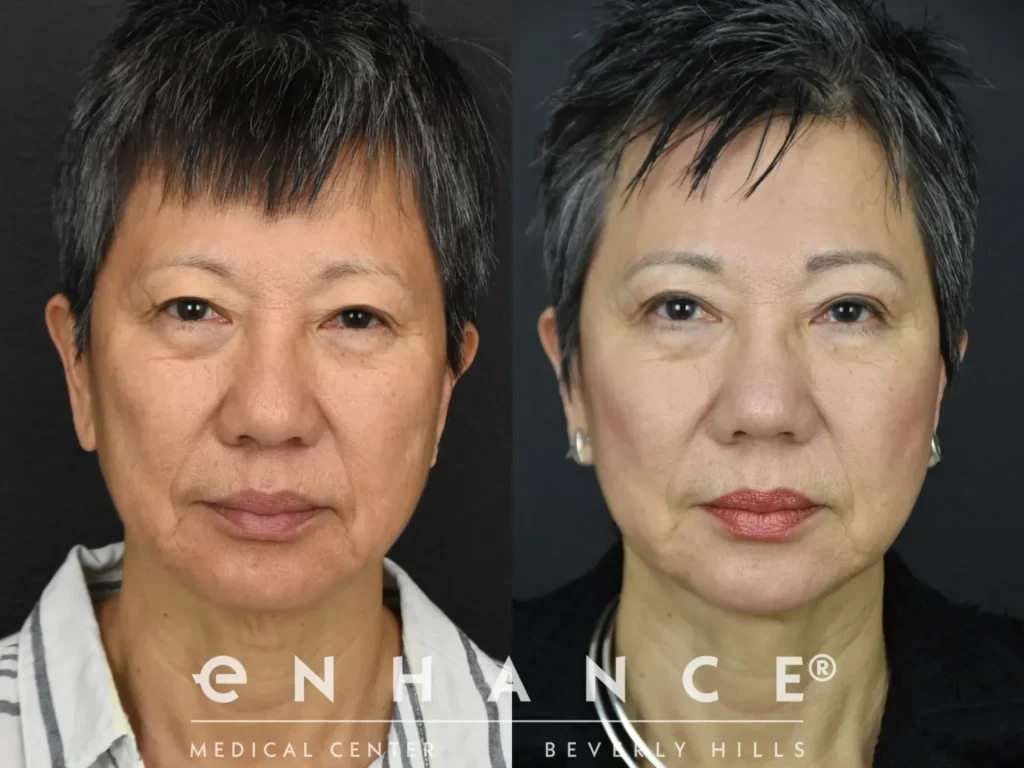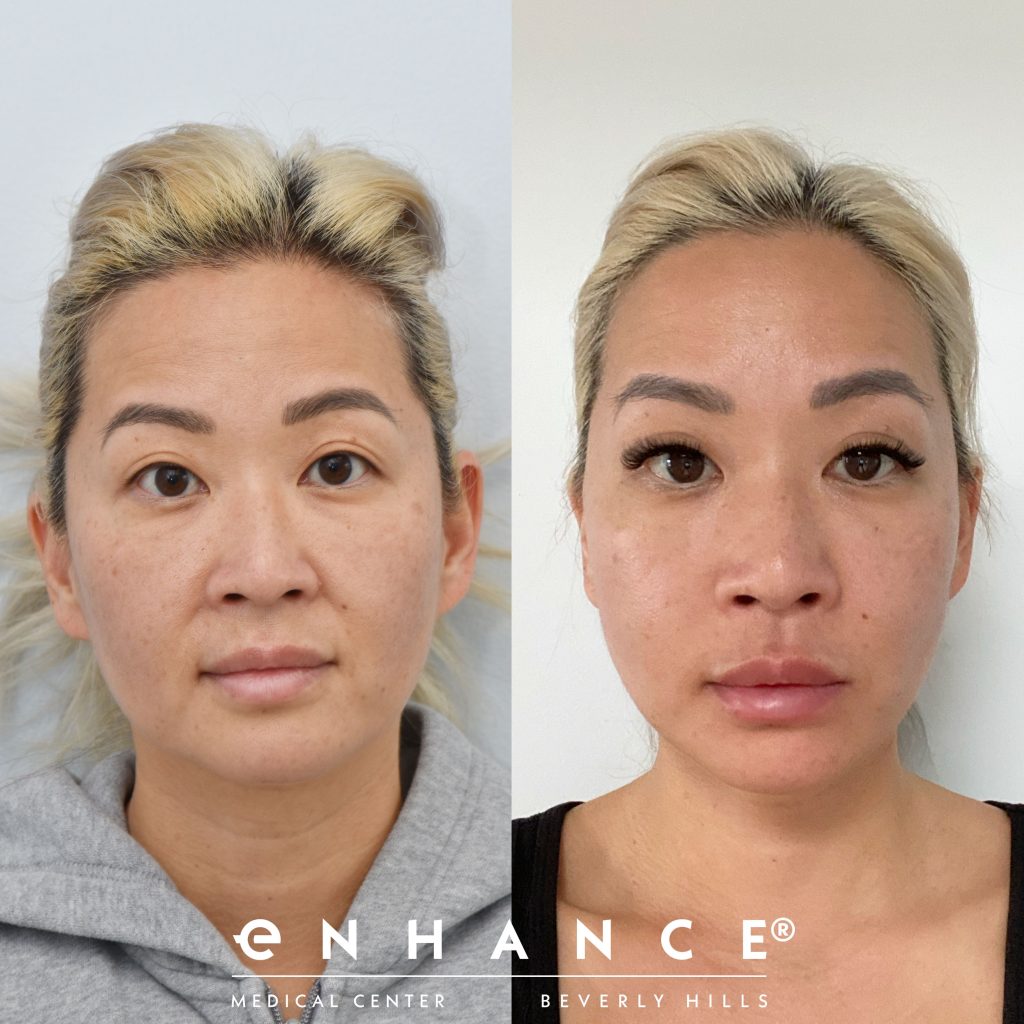Facelift in Beverly Hills
Overview
Your face is typically the first thing people look at when they see you, and it is often the first area where signs of aging begin to appear. Deep wrinkles around the mouth, drooping cheeks, an undefined jawline, and sagging neck tissues can make you appear older than you feel.
Dr. Charles Lee is board certified in both plastic surgery and facial plastic surgery, and he offers facelift surgery to help Asian patients achieve a younger, more rested facial appearance. Dr. Lee understands that Asian patients experience facial aging in a unique way, and he uses surgical techniques to maintain their aesthetic but rejuvenate their look.
What Can a Facelift Treat?
Drooping Cheeks
As patients enter their 30s, their skin produces less collagen, which eventually leads to sagging and a loss of fullness in the mid-face. The loss of fat and elasticity in the mid-face also can cause an older, more tired appearance.
Nasolabial Folds
Asian patients commonly experience aging in the nasolabial region (between the nose and mouth). Lines and folds form, creating the look of parentheses. Mid-facelift surgery addresses this by lifting the underlying tissues and smoothing the skin.
Sagging Jowls
Loss of collagen and elastin in the mid-face and around the mouth causes the skin to loosen and fat to collect at the jawline. Jowls can create the appearance of frowning and alter your facial contour.

What Facelift Techniques Are There?
Mid-Facelift
- The incision starts in front of the lower ear and continues along the back of the ear toward the hairline
- Dr. Lee lifts the underlying tissues that cause nasolabial folds
- Dr. Lee prefers the deep plane facelift, in which the entire skin and underlying muscle (rather than the skin alone) are lifted at the same time
- This reduces the “wind-tunnel” effect of an overly tight skin lift and reduces tension during skin closure
- This technique addresses the middle portion of the face, which can be difficult to correct with traditional facelift surgery
Lower Facelift
- The incision starts in front of the lower ear and continues along the back of the ear toward the nape of the neck
- The underlying tissues are repositioned, the fat is sculpted, the muscles are lifted, and the skin is redraped
- This addresses the lower third of the face, including the corners of the mouth, chin, jawline, and neck
- Dr. Lee prefers the extended subplatysmal neck lift, in which both the skin and underlying muscle are lifted together, rather than the skin alone, reducing tension on the skin closure and leading to better-looking scars
Combination Procedures
Patients with signs of aging in the upper face often combine their facelift with another procedure to achieve balanced, comprehensive facial rejuvenation. Common procedures combined with a facelift include:
- Endoscopic forehead lift (brow lift) surgery to address drooping brows, forehead wrinkles, and furrows between the eyes
- Upper and/or lower blepharoplasty (eyelid surgery) to address bags, puffiness, and loose skin around the eyes

Other Facelift Concerns
What Is Facelift Recovery Like?
Facelift surgery is an outpatient procedure, but you need to have someone to drive you home and stay with you for the first 24 to 48 hours. Dressings and bandages may cover the incisions to reduce swelling and aid in the healing process. Most facelift patients can return to work and their normal activities within one to two weeks, but all strenuous exercise should be avoided for four to six weeks.
How Do Facelift Scars Heal?
As with any surgery, scars will develop at the incision sites. These scars will be hidden in the hairline and natural creases of the skin. To reduce the visibility of the scars, you should keep the incisions out of the sun and apply silicone sheets and topical scar cream. All scars will fade with time.
How Much Does a Facelift Cost
The cost of your procedure will vary depending on the techniques or combination of techniques used. The final cost will also reflect anesthesia costs, facility fees, surgical fees, and other related costs, such as pre- and post-operative appointments. Dr. Lee’s office will provide you with an accurate cost estimate during your consultation.
Is a Facelift Painful?
Facelift surgery is performed with anesthesia to prevent pain. Once the anesthesia wears off, you may feel some discomfort, tenderness, and tightness. Oral pain medication and cold compresses can remedy this, and all bruising and swelling should subside quickly.
Frequently Asked Questions
Am I a candidate for a facelift?
Candidates for a mid-facelift experience dissatisfaction and insecurities from the aging of their mid-face. Facelift surgery can benefit patients who are noticing a deepening of the lines between the nose and mouth. Facelift candidates should be in good overall health and have realistic expectations of their results.
What facelift technique is best for Asian patients?
Although Asian patients do not experience the same level of aging on the lower face and neck as Caucasian patients, some may benefit from a lower facelift in combination with a mid-facelift. This combination allows Asian patients to achieve full facial rejuvenation.
Will a facelift address my forehead wrinkles and drooping eyebrows?
Facelift surgery focuses on aging in the middle and lower portions of the face; it does not address the forehead and brows. Patients with wrinkles across their forehead, lines between their eyebrows (furrows), and sagging eyebrows that hang over their eyes can benefit from combining their facelift with a forehead lift (brow lift).
What are the potential complications associated with facelift surgery?
This surgery is considered a safe and reliable way to improve the youthfulness of your face. While rare, complications and side effects are possible. These risks include:
- Adverse reactions to anesthesia
- Bleeding
- Infection
- Poor wound healing
- Scarring
- Asymmetry
- Changes in skin sensation
Will my results be permanent?
While the results of a mid-facelift are designed to be long lasting, they will not stop the natural aging process. Your appearance will, however, always be more youthful than if you did not have surgery.
How can I prolong the results of my facelift?
Implementing a consistent skincare routine, protecting your skin from the sun, staying hydrated, and maintaining a healthy diet are steps you can take to maintain the results of your facelift.


